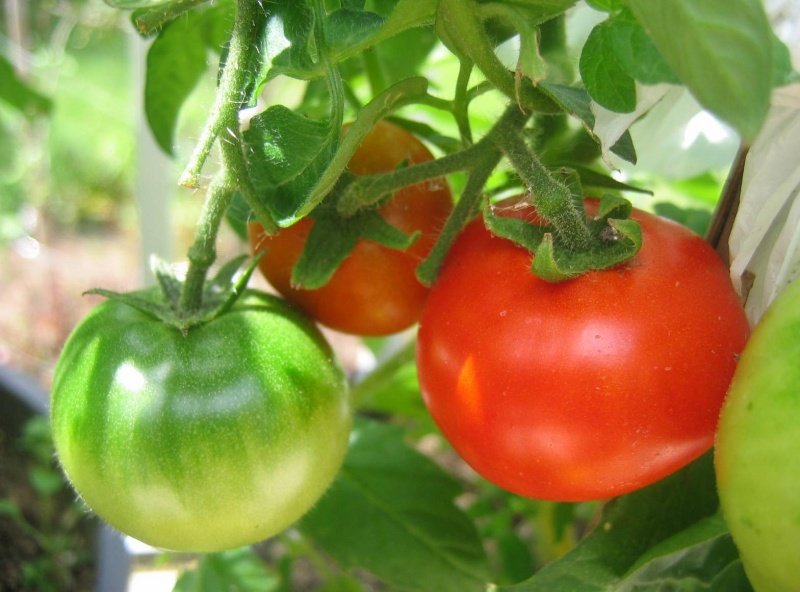Back to August 2015 Newsletter
Tomatoes Galore!

Brittney Glass
If you read the article “A Day in the Life of a Seeds of Diversity Seed”, from our July e-bulletin, you’ll know exactly what happens to these tomato seeds next. They must all be inventoried and stored properly in the Seeds of Diversity collection. Most of the samples we received are rare, heirloom varieties and therefore contain few seeds. These will go into permanent storage in our freezer almost immediately in order to ensure that their genetic material is preserved effectively.
So far, we have inventoried about half of the seeds we received. 400 down, only 400 more to go! In the process, we have come across some very interesting and unique varieties. “Giant Belgium”, for instance, is a variety of tomato that can grow up to 5 lbs. when mature. That’s right – 5 lbs., bigger than some pumpkins! This variety originated in Ohio in the 1930s. It is a very sweet, non-acidic, beefsteak tomato. Traditionally, it was used to make wine because of its desirable flavor and size. Nowadays, it is the perfect tomato to use for sandwiches because just once slice will cover a whole piece of bread. The largest Giant Belgium ever grown was 7lbs, 12 ounces. This tomato was grown by Gordon Graham of Edmond, Oklahoma, in 1986 – in his backyard greenhouse!
We were surprised when we came across a variety called “Heinz”, in the collection, and wondered if this was the same tomato used to make Heinz ketchup. A bit of research showed that the original Heinz heirloom variety has been extensively modified since it was first grown in the early 1900s. So, unfortunately, the Heinz ketchup we eat today is not produced with that original variety. It would be interesting, however, to grow out some of the Heinz seeds we received, make some ketchup, and see how it compares to the store-bought stuff!
Other interesting varieties include “Raymond’s Canada”, which comes from Origin Organic Farms in Delta, British Columbia. It was first grown by Raymond Wong, and has since become a very popular tomato in the area. It has always been grown organically, and is known for its full, rich flavor. “Siberian Early” is a cold-loving variety. There are few tomato plants that grow well in cool climates, but this is definitely one of them. The fruits grow to be 5oz, bright red, and juicy, in only 65 days. Some have been known to reach maturity in less than 50 days in even the most unfavorable climates. This variety is perfect for growers in northern Canada.
**
If you are interested in growing out any of our newly acquired tomato seeds, please contact Paul Hrycyk at paul@seeds.ca. Many of these varieties are very rare and now unique to our collection, so we want to do all we can to preserve them for future generations.
Members of Seeds of Diversity can pull out their copies of our November 2014 magazine (issue 27.4) to read more out about the Dan and Val McMurray collection of tomatoes. To subscribe to the magazine, visit www.seeds.ca/subscribe.
**
Brittney Glass is an intern at Seeds of Diversity Canada
Photo: Sibirskiy Skorospelyi (Early Siberian) tomato, Tatiana's Tomatobase, http://tatianastomatobase.com.
Not yet a member?
An annual membership to Seeds of Diversity gives you access to our seed exchange, seed grow-out programs, and our online news.

We depend on donations to do our work.

Thank you for your support!
